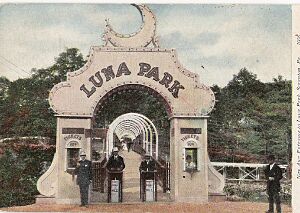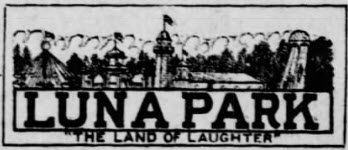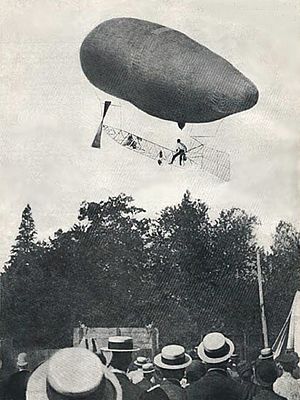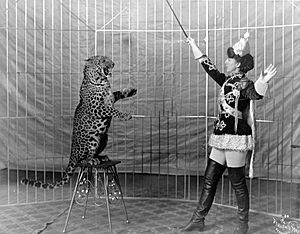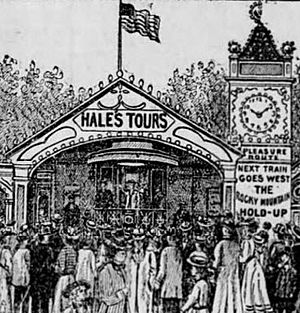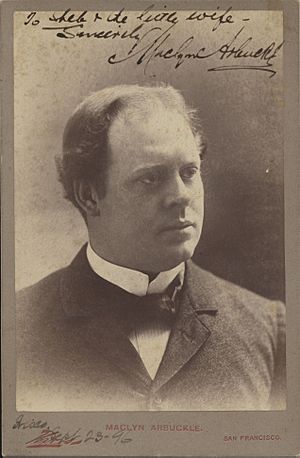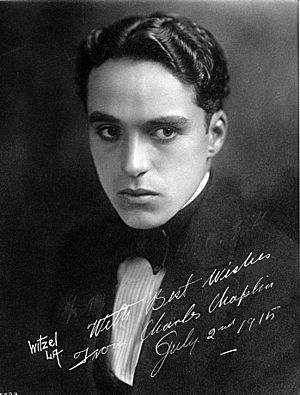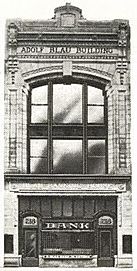Luna Park, Scranton facts for kids
Luna Park was a fun amusement park in Scranton, Pennsylvania. It was open from 1906 to 1916. A famous park builder named Frederick Ingersoll helped design and run it. The park was built on 20 acres of land near Moosic Mountain and the Roaring Brook gorge. Today, there isn't a special sign to remember where the park once stood.
Contents
How Luna Park Started
Even though it had a similar name, Luna Park in Scranton was not connected to the famous Luna Park on Coney Island, New York. Frederick Ingersoll was a pioneer in building amusement parks. He created a chain of "Luna Parks" across the country. He built parks in Pittsburgh and Cleveland in 1905. Then, in 1906, parks opened in Washington, D.C., Indianapolis, and Scranton. He even built one in Mexico City the next year!
Ingersoll made building parks easier by using the same plans for each one. He advertised for investors, saying, "We use the best materials, perfect plans, expert builders, and reasonable price." This way, he could build parks quickly and efficiently. He also brought in entertainment like vaudeville shows and circus acts. These acts could travel between his different parks, which saved money.

Construction on Luna Park, Scranton, began in November 1905. It cost about $300,000 to build. The Scranton Luna Park Company started running the park on May 28, 1906. Local newspapers showed that people in Scranton were very interested in having an amusement park.
Before Luna Park opened, many people from Scranton took train trips to visit Luna Park, Coney Island. Local business people saw how popular these trips were. They realized that people wanted a fun park closer to home. They also saw how well a temporary "mini-Luna Park" did in Carbondale, Pennsylvania. This showed them that a permanent park in Scranton would likely be a big success.
Park Design and Fun Rides
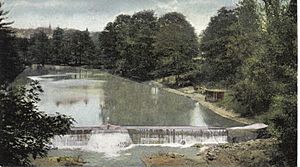
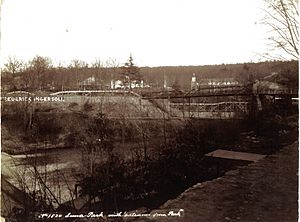
Frederick Ingersoll designed Luna Park in three main parts. The first part had a small lake created by damming Roaring Brook. People could go boating and do water sports there. To get to the main part of the park, you crossed a tall bridge over the gorge.
The second part was shaped like an oval and was the main amusement area. It had a large pool called "The Lagoon" for the "Shoot-the-Chutes" ride. Some of the exciting rides and attractions included the "Scenic Railway" (a roller coaster), the "Aerial Circle Swing," and the "Scenic River/Old Mill." There was also a "Blarney Castle," a "Dance Pavilion," and a "Dentzel Menagerie Carousel" with animal figures. You could also find a "Band Stand" and a "Circus Platform" for shows.
The third part of the park was a large picnic area with a "Picnic Pavilion." Over time, more attractions were added, like "Hale's Tours of the World" (a simulated travel experience) and "Mahoney's Pony Rides." The park also offered free live entertainment, including vaudeville acts, circus shows, and orchestra performances. Two very popular acts were aviator Lincoln Beachey flying his airship and Dolores Vallecita with her amazing leopard act.
Luna Park was designed to be a "trolley park". This meant it was easy to get to by electric streetcars. In its first few years, many people came to the park, mostly by riding the Laurel Line trains or Scranton Railway Company trolleys. Later, they added parking lots for cars.
Money Troubles and Changes
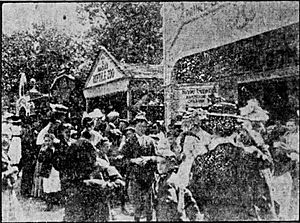
One big problem for the park was that the land it was on was rented. The rent payments kept getting higher over time. This became a serious issue when the U.S. economy faced tough times around 1907. Frederick Ingersoll had to sell his shares in the park and leave his role as vice-president.
As the economy struggled, fewer groups like churches and businesses booked outings and picnics at the park. Even so, the park's leaders decided to expand. They added new buildings, changed old ones, and put in more lights to attract visitors. But these changes cost a lot of money. Ticket sales weren't enough to cover the operating costs, rent, and expansion expenses. This led to the park falling into debt.

To avoid losing the park, the leaders brought in new investors. A main investor was Adolph Blau, who owned a local bank. Blau's bank gave the park money, and in return, he got most of the park's stock and became its president for several years. Even with money problems, the park added more attractions for the 1909 season. These included an arcade, a fun house called "Billiken's Temple," an alligator zoo, and a miniature railroad. However, other parks started copying Luna Park's ideas, which meant fewer people came to Scranton's park.
Getting enough money each day was a constant challenge. The park was very busy on weekends, holidays, and for special events like company picnics. But on regular weekdays, it was often quiet. The park management struggled to find ways to bring in more visitors.
Trying New Ideas
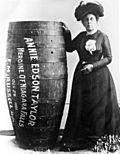
The park tried different ideas to attract crowds. They put up a large outdoor screen to show movies, but this didn't work well in bad weather. They also thought about having a full circus, but it was too expensive. Another idea was to sell mineral water from a spring in the park. They even built a "Spring House" for it. But neighbors complained because they used to get the water for free. So, the park had to stop selling it and let people get water for free again.
By the end of 1911, fewer groups were booking outings. The park was saved when large worker unions decided to hold their Labor Day parties there. This brought in enough money to finish the season.
In 1913, the park was even used as a movie set! A film starring Maclyn Arbuckle used Luna Park as a background for a scene where a fire was put out. This helped the park earn some money.
Luna Park's tickets cost ten cents for adults and five cents for children to get in. Each ride or attraction cost another ten cents. To compete with other entertainment places, Luna Park gave away free tickets with bread purchases and offered special bundled tickets. They also found that dancing was a great way to make money. They charged ten cents per person to dance in the Dance Pavilion. With live music, they could make a lot of money each night. They even hired dance teachers to give lessons. Dancing became the park's main source of income.
In 1914, the park spent a lot of money to make rides safer after accidents happened at other parks. This made the park safer, but it also increased costs. To make up for this, they focused on getting more private groups to visit. They also held weekly dance contests, which were very popular. However, when the park tried to open on Sundays, a local reverend led a boycott. This forced the park to close on Sundays again, and many religious groups canceled their visits, causing revenue to drop.
In June 1915, the famous actor Charlie Chaplin visited Luna Park. He was promoted as visiting a friend who was the park manager. This caused a "small riot" of people who paid to see the popular actor, bringing in many visitors.
But on June 11, 1915, the Blau Bank House, which held a lot of the park's money, failed. This meant the park lost its cash deposits. The bank also held a special loan that used Luna Park as collateral. With no money and a loan due, the park struggled. They stayed open as late as possible, until September 25, to try and earn enough money. But some managers left, and an accident happened on the crowded Scenic Railway. In its final year, the park cut all expenses, even insurance, and focused heavily on the Dance Pavilion to make money.
The End of Luna Park
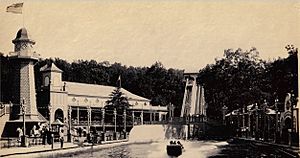
A terrible fire destroyed one-third of the park on August 23, 1916. The fire started early in the morning and burned down important buildings like the Dance Pavilion, the Scenic Railway station, and the Shoot-the-Chutes ride. A police officer saw the fire start near the Dance Pavilion. It spread quickly because of the wind and burned all night. The damage was estimated at $15,000.
Even while the park was still burning, the park leaders met. A very large group was scheduled to visit in a few days. They decided to rebuild the dance floor as fast as they could. Workers started clearing the debris and pouring a new concrete foundation that very morning.
Within a week, a new roofless dance floor was ready. But the park ran out of money. They couldn't rebuild the roller coaster station or the Shoot-the-Chutes ride. On the day of the big outing, it rained heavily. Not many people came because they didn't want to dance on an open platform in the rain. The park didn't make enough money.
The park couldn't pay its debts. On January 5, 1917, Luna Park was sold at a public auction. All the amusement buildings were torn down in May 1917. The land was eventually sold to the city of Scranton. In 1929, someone tried to build another amusement park on the site, but the city council said no because of money concerns and noise worries from neighbors.
Luna Park Today
Today, very little remains of Luna Park. You can still find parts of a dam, the old circus platform, and some scattered concrete pieces. Much of the park's land is now covered by Interstate 81, which was built in the 1960s. More land was changed when the Central Scranton Expressway was widened in 1998. The mineral spring is also gone.
You can sometimes find old postcards and souvenirs from Luna Park online or in antique shops. The original souvenir shop sold glass and ceramic items with park scenes. The Scranton Electric City Trolley Museum has a small display of these items.
No official studies have been done to dig up and explore the park's remains. However, some people have recorded videos and photos of walks through the area, which you can find online.
|


